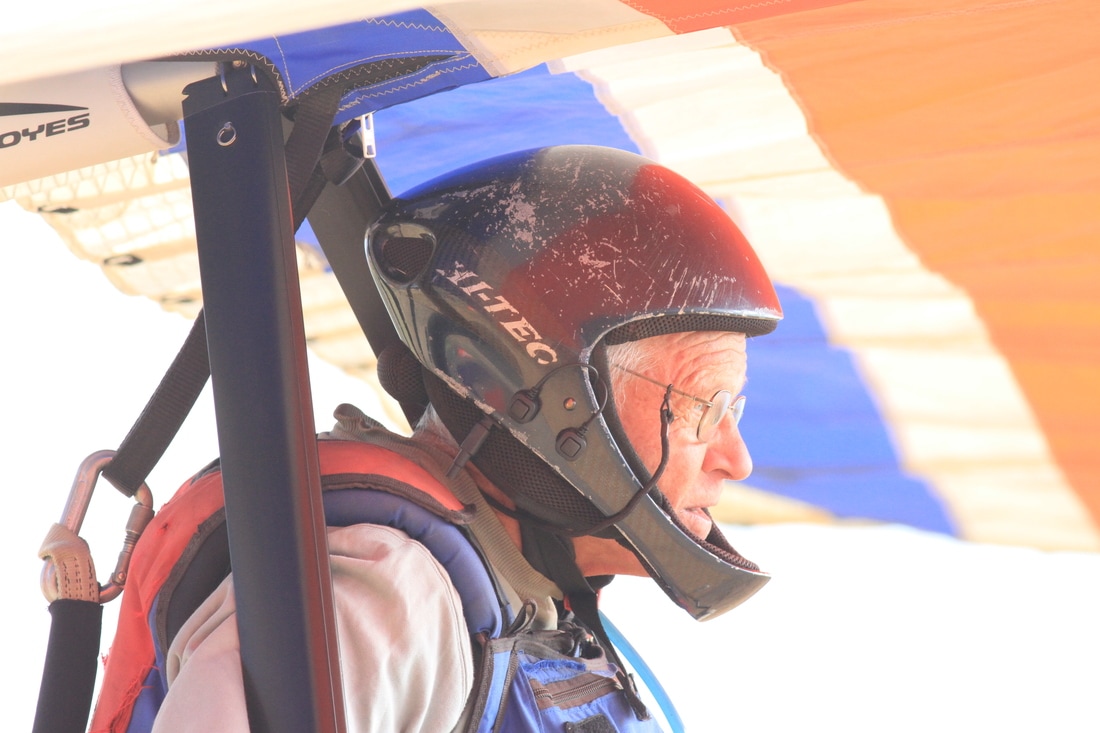If you can’t control your glider during any conditions that could occur while you are standing at launch, you should not be standing at launch. This of course also involves a model. The model says that what you will experience at launch will be no worse than what you have observed over the past period of time.
|
Photo Cedit: Alex Turner HG tips from a Jedi Master that cross over to the PG side. Spring is here and ,maybe you are getting ready to fly after a bit of a layoff. Review your take off procedure. Do you like to have a wire crew? If you need a wire crew to stabilize your glider at take off you shouldn’t be at take off. You may want help getting to the spot where you start your run. This is especially true at the Laguna cliff launch where you have to get your glider up over a hump and get your wing tips past rocky bumps. It’s good to have some help, a little insurance, to keep the glider from getting away from you as you negotiate the obstacles. But once on launch you should be able to control the glider by yourself no matter what the wind does. Why? Well, when you say “CLEAR!”, you are the only one controlling your glider. What if at that instant, or during the first step or two of your run, the wind conditions where you need help, suddenly occur? You have to control the glider on your own. You build a weather model in your head. At launch you study the wind conditions and see that there are times when the wind is too strong, or too cross, or too blustery. Then there are nice conditions. You decide that the nice conditions last long enough for a controlled take off. So you stand at launch with help controlling the glider during the not nice conditions and wait for a nice condition. It occurs and you say “CLEAR!”. What if you space-time weather model is wrong? What if the nice condition does not last as long as your model expects? What if the wind 20 feet down the ramp is not nice, that is the spatial aspect of your model is wrong? What are you willing to risk based on the weather model you have created in your head? If you can’t control your glider during any conditions that could occur while you are standing at launch, you should not be standing at launch. This of course also involves a model. The model says that what you will experience at launch will be no worse than what you have observed over the past period of time. Light wind conditions pose a different problem. Suppose you need a 10 mph wind on a shallow slope launch, and that is the maximum speed of the wind. Sometimes it is less. So you wait for a good cycle and off you go. If the wind holds, you are fine. If it gets lighter, then what? Again, you are basing your decision to take off on a model you have created in your head. If the wind is light you must be able to take off in no wind conditions. Bill Helliwell Photo Credit: Hadi - Henry Golian
0 Comments
Leave a Reply. |
SDHGPAThe San Diego Hang Gliding and Paragliding Association Categories
All
Archives
February 2024
|



 RSS Feed
RSS Feed

